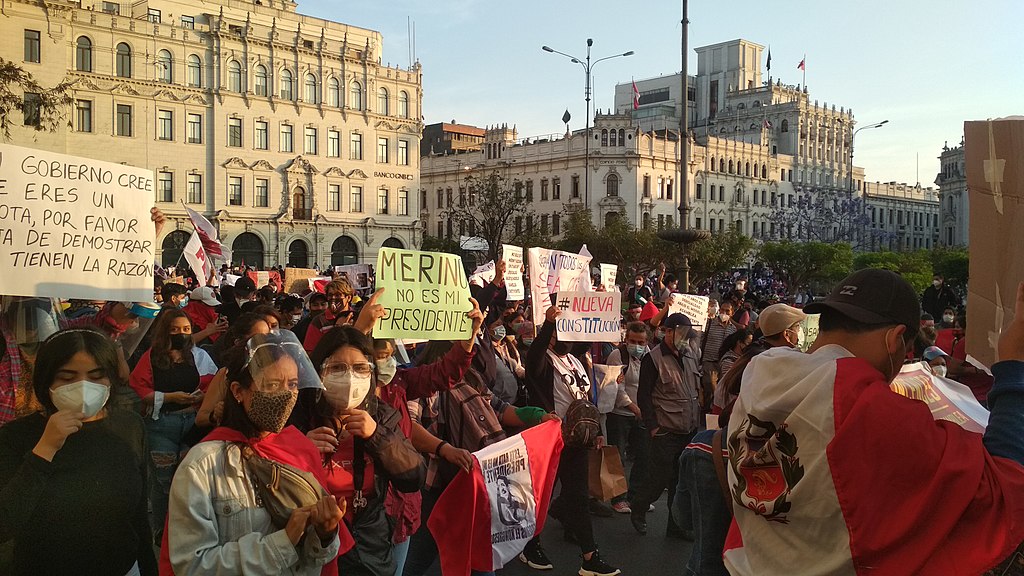Valentina Olave Agudelo discusses the rapid growth of the National Stock Exchange of India to the fifth-largest equity market globally, driven by economic factors and foreign investments, and warns of potential instability reminiscent of past financial crises, emphasising the need for balanced regulatory measures.
In March 2024, the market capitalization of the National Stock Exchange of India reached USD 4.65 trillion, more than doubling its 2020 value and becoming the fifth-largest equity market in the world. Analysts attribute this surge in foreign capital to several factors: rapid economic growth, favourable demographic forecasts, Narendra Modi’s focus on infrastructure and digitization, and investors fleeing China’s slowing markets. While some have raised concerns about the stock market rally’s sustainability given the poor performance of some of the stock listings -especially in initial public offerings (IPOs)-, others argue that continued liberalization is essential for maintaining this boom.
However, this scenario is not new; rather, it echoes common elements of the initial stages of past financial crises that began in Latin America in the 1980s, spread to East Asia in the late 1990s, and hit the North Atlantic economies in 2007. Despite the different characteristics of these economies, their crashes share common causal threads. This article argues that these crises were triggered by three interrelated mechanisms: financial deregulation, financialization, and increased liquidity.
The Bretton Woods Regime and Financial Stability
Post-Great Depression proposals like the New Deal and Keynes’ “General Theory of Employment, Interest and Money” laid the basis for the Welfare State and the Bretton Woods (BW) regime’s macro-stability measures to manage risk via stable exchange rates (ER), capital controls, low interest rates, and coordinated international policies. Recognising that chronic payment imbalances were at the core of impoverishment, social discontent, and even wars and revolutions, the BW regime aimed to maintain global economic stability through two primary mechanisms. First, linking the US dollar to gold (and fixing other currencies to it) ensured stable exchange rates by minimizing currency fluctuations and preventing harmful strategies like competitive devaluations, or “beggar thy neighbour” tactics. Second, implementing capital controls reduced the volatility of capital flows, further limiting payment imbalances. These measures effectively maintained stability, as evidenced by the few economic crises during this period.
Building Up the Crises: Financial Deregulation, Financialization, and Increased Liquidity.
The end of the BW regime and the beginning of rotating financial crises can be traced back to the end of the gold standard, as it removed one of the fundamental pillars of international macro stability: stable ERs. Later, the OPEC crisis further paved the way for financial deregulation. The 1970s’ economic stagnation and high inflation prompted dissatisfaction with Keynesian regulation as critics argued that measures like capital controls and welfare state imperatives were excessive and detrimental. In response, the neoliberal doctrine, which claims that rational agents operating in free markets (with well-defined and enforced property rights) will always reach an optimal equilibrium, was established as the new paradigm guiding the state. Consequently, the second pillar of macro-stability, namely capital controls, was removed. Onwards, the state shifted to minimizing market frictions through deregulation, corporate tax cuts, and promoting trade and financial liberalization.
In line with the neoliberal paradigm, financialization has rested on the belief that stock markets are rational indicators of firms’ performance and capable of self-correcting misalignments. This notion has promoted the adoption of models of corporate governance that, when added at macro levels, have the power to transform the global economy. For instance, the Maximizing Shareholder’s Value (MSV) theory, tied managerial compensation to stock performance rather than product market success, increasing corporates’ reliance on financial assets for profitability. Furthermore, financialization contributed to income polarization and increased liquidity by incentivising disproportionate compensation for shareholders and top executives at the cost of workers’ job insecurity, stagnant wages, and productivity.
The Volatility Machine
Contrary to self-correcting market assumptions, evidence suggests that financial systems without regulations are inherently unstable for three main reasons: agents tend to assume that favourable conditions will persist and borrow more than it is privately and socially efficient; speculative predictions about the future influence financial markets; and investors often engage in momentum trading. These conditions have resulted in a volatility machine through several interrelated mechanisms.
First, income polarization has led to excess liquidity in financial markets, which, when combined with financial liberalization can exacerbate economic cycles’ extreme fluctuations. Wealth concentration at the top enlarges the pool of global financial resources seeking investment opportunities and, as investors are attracted to developing countries with high interest rates and “supportive business environments”, governments are pressured to eliminate capital controls and other regulations. Consequently, upswings in the stock of global financial assets increase capital inflows to developing countries[1], causing ER appreciations, trade deficits, and asset bubbles driven by credit and speculation. The absence of capital controls leads to unsustainable booms, where sudden investor confidence loss triggers massive capital outflows, panic, and economic crises.
Second, in highly indebted economies, monetary responses to downturns in advanced economies can deepen crises in two main ways: by rising interest rates and by appreciating the core currency relative to the currencies of the periphery. On the one hand, higher interest rates in response to inflationary conditions can increase the difficulty to repay existing debts and acquire new credits both at the core and the periphery. On the other hand, higher interest rates at the core draw capital inflows and the appreciation of its currency. The latter contributes to financial fragility in developing countries, as external debt is usually issued in foreign currency at floating exchange rates.
Multi-Country Financial Crises Marked by Credit Booms and Busts
With the theoretical mechanisms outlined, we can see how, in practice, they have resulted in rotating credit bubbles. In the Latin America debt crisis, increased liquidity came from oil producer countries’ revenues deposited in Western banks, which sought borrowers in Latin America in need of capital to cover oil import costs and investments. Subsequently, creditors and borrowers engaged in a “borrowing and lending extravaganza”, issued at low but variable interest rates. When the Fed raised US interest rates, indebted countries faced higher debt repayments, leading to defaults, massive capital flights, and draining foreign reserves. This vulnerable situation brought back the IMF as a main creditor, introducing conditional loans and Structural Adjustment Programs. Similarly, in East Asia, western banks with high deposits looked for borrowers in the fast-growing countries. The region experienced a dramatic inflow of capital until the ratios of foreign debt as share of GDP fuelled investors panic, massive capital flight, devaluations, and crisis. Then, in the North Atlantic Financial Crisis, the enlarged global pool of money seeking higher returns led financial institutions to “discover a Third World country inside the US” by generating subprime mortgages targeting low-income homebuyers. This created the final credit bubble that triggered the crisis in the North Atlantic economies.
Now, returning to the current developments in India’s national stock exchange, we see how the rapid surge in capitalization mirrors past financial crises as India’s rapid economic growth and favourable demographics attract unprecedented inflows of foreign capital. This time, the pool of global financial resources is largely coming from a weakened China, while the mismatch between high market valuations and poor IPO performance highlights the potential for speculative bubbles. All these factors have the potential to generate rotating credit bubbles that heighten debt distress, financial fragility, and economic crises, with even more profound consequences for the stability and growth of developing countries. To mitigate these risks, India must implement balanced policies that embrace the benefits of financial openness while maintaining stability. Perhaps it could be a good moment to implement counter-cyclical “capital flow management measures” (as the IMF would call them) to moderate these surges in external financing, especially in short-term flows that can quickly enter and exit based on their performance.
[1] According to Golden and Krogstrup (2018) global financial conditions, rather than local factors, are five times more important as determinants for capital inflows to developing countries, compared to the advanced economies.
The views expressed in this post are those of the author and do not reflect those of the International Development LSE blog or the London School of Economics and Political Science.
Featured image credit: National Stock Exchange, Mumbai, India. Jnpet via Wiki Commons.





